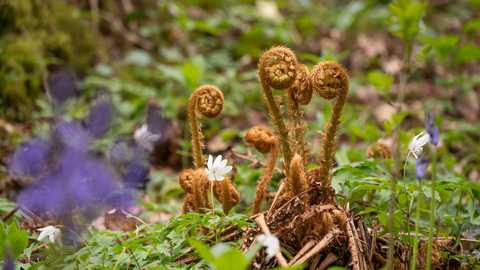
Ridley Bottom (c) Nathan Millar
Ridley Bottom
Location
Know before you go
Dogs
When to visit
Opening times
Open access throughout the yearBest time to visit
April to AugustAbout the reserve
A fragment of ancient woodland can be found at the entrance of Ridley Bottom, with small-leaved lime, ash, pedunculated oak and silver birch among the trees found there. Old lime hedgerows thought to have been a feature for hundreds of years enclose the three small meadows, which are filled with grassland flowers, including common spotted, heath spotted and lesser butterfly orchids. Cowslips, field scabious and yellow-wort can be spotted, as well as wildflowers associated with woodlands such as wood anemone, sanicle and primrose, indicating a wooded past. Birds drawn to the quietness of this nature reserve include blackcap, linnet, tree pipit, and coal tit. The hedgerows provide safe routes for small mammals travelling between neighbouring woods and other meadows. Footpaths connect Ridley Bottom to the acid grassland at neighbouring nature reserves Poors Allotment and The Park - a heathland restoration area.
Hay is made from the grass at Ridley Bottom in July, with sheep turned out to graze between mid-July and December.
History
The small size of the meadows at Ridley Bottom have prevented them from post 1950s agricultural development. The ancient skill of coppicing, letting sunlight reach the woodland floor, was practised here for centuries.



